Chapter 1
Transition from the Canada Emergency Response Benefit: Bill C-4 receives Royal Assent
Alan Roth and Lucie Champagne, Toronto
On October 2, 2020, Bill C-4, An Act relating to certain measures in response to COVID-19, received Royal Assent. Bill C-4 replaced Bill C-2, An Act relating to economic recovery in response to COVID-19, which was introduced on September 24, 2020.
Bill C-4 enacts the Canada Recovery Benefits Act to authorize the payment of the Canada recovery benefit (CRB), the Canada recovery sickness benefit (CRSB) and the Canada recovery caregiving benefit (CRCB), which had been proposed on August 20, 2020 in the government’s plan to transition from the Canada Emergency Response Benefit (CERB). For more information, see EY Tax Alert Issue No. 45.
Bill C-4 contains some amendments to the August 20, 2020 proposals, as well as added clarification with respect to each new temporary benefit program.
Canada Recovery Benefit
The Canada Recovery Benefit (CRB) provides eligible individuals with a benefit of $500 per week (increased from $400 per week in the initial proposal).
An eligible individual may receive the CRB for any two-week period falling within the period beginning on September 27, 2020 and ending on September 25, 2021, for a maximum of 26 weeks (or 13 periods). The CRB will therefore provide a payment of $1,000 for each two-week period, from which the Canada Revenue Agency (CRA) will withhold 10% as tax at source, resulting in a net payment of $900.
The eligibility requirements for the CRB have also been expanded and clarified. An eligible individual must satisfy all the following criteria:
- Have a valid social insurance number.
- Be at least 15 years of age on the first day of the two-week period.
- Be resident and present in Canada during the two-week period.
- Have stopped working for reasons related to COVID-19 or have experienced a reduction of at least 50% in average weekly income for the two-week period compared to 20191 or in the 12-month period before the date on which the application is made due to COVID-19.
- Had employment income and/or self-employment income of at least $5,000 in 2019,2 or in the 12-month period before the date on which the application is made. Income includes employment and self-employment income, as well as maternity and parental benefits from Employment Insurance (EI) or similar provincial plans.
- Be ineligible for EI benefits.
- Have not received, nor is entitled to receive, in respect of any week that falls within the two-week period, the CRSB, the CRCB, short-term disability benefits, workers’ compensation benefits, EI benefits or Québec Parental Insurance Plan (QPIP) benefits.
- Have sought work during the two-week period and not turned down reasonable work (note: a provincial exception is provided if the individual attended during the two-week period a course, program or training referred by a provincial government or body). If the individual turns down reasonable work, the individual will automatically lose 5 periods (10 weeks) of the CRB eligibility periods. The individual will also be required to wait five periods (10 weeks) before re-applying.
- Have not quit their employment or reduced the number of hours worked voluntarily on or after September 27, 2020.
For each two-week benefit period, the applicant must apply for the CRB and complete an attestation to confirm their eligibility, subject to certain exceptions. An application for the CRB must be made within 60 days after the end of the two-week period to which the benefit relates.
A claimant must repay $0.50 of the CRB for each dollar of income earned (not including the CRB, but including the CERB for 2020, and the CRSB or CRCB (see below)) exceeding $38,000 in 2020 or 2021, up to the amount of the CRB received in the year.
The application portal on the CRA’s website opened on October 12, 2020. Applications may be made online using CRA My Account or by phone.3
Canada Recovery Sickness Benefit
The Canada Recovery Sickness Benefit (CRSB) provides eligible individuals with a benefit of $500 per week for up to two weeks. An eligible individual may receive the CRSB for any one-week period falling within the period beginning on September 27, 2020 and ending on September 25, 2021, for a maximum of two weeks. The CRSB will therefore provide a payment of $500 for each one-week period, from which the CRA will withhold 10% as tax at source, resulting in a net payment of $450. The two one-week periods do not have to be taken consecutively.
An eligible individual must satisfy all of the following criteria:
- Have a valid social insurance number.
- Be at least 15 years of age on the first day of the applicable week.
- Be resident and present in Canada during the applicable week.
- Have stopped working for at least 50%4 of the time they would have otherwise worked during the week because the individual is either sick with COVID-19 (or may have COVID-19), has been advised to self-isolate as a result of COVID-195 or has an underlying condition putting them at greater risk of contracting COVID-19.6
- Had employment income and/or self-employment income of at least $5,000 in 20197 or in the 12-month period before the date on which the application is made. Income includes employment and self-employment income, as well as maternity and parental benefits from EI or similar provincial plans.
- Have not received nor is entitled to receive, in respect of the week, the CRB, the CRCB, short-term disability benefits, workers’ compensation benefits, EI benefits or QPIP benefits.
- Have not been granted paid leave in respect of the same week.
For each one-week benefit period, the applicant must apply for the CRSB and complete an attestation to confirm their eligibility, subject to certain exceptions. An application for the CRSB must be made within 60 days after the end of the week for which the benefit relates. Unlike the CRB, there is no repayment requirement triggered by a net income threshold for the year.
The CRA application portal opened on October 5, 2020. Applications may be made online using CRA My Account or by phone.8
Canada Recovery Caregiving Benefit
The Canada Recovery Caregiving Benefit (CRCB) provides eligible individuals with a benefit of $500 per week. An eligible individual may receive the CRCB for any week falling in the period beginning on September 27, 2020 and ending on September 25, 2021, for a maximum of 26 weeks (per household). The CRCB will therefore provide a payment of $500 for each one-week period, from which the CRA will withhold 10% as tax at source, resulting in a net payment of $450.
An eligible individual must satisfy all of the following criteria:
- Have a valid social insurance number.
- Be at least 15 years of age on the first day of the applicable week.
- Be resident and present in Canada during the applicable week.
- Have stopped working for at least 50%9 of the time they would have otherwise worked during the week in order to take care of a child who was under 12 years of age (as of the first day of the week) or a family member (considered to be a close relative) requiring supervised care if one or more of the following applies:
- The school, daycare, day program or care facility was either closed or unavailable to them due to COVID-19.
- The person who usually cared for the child, or the care services normally provided to the family member in their place of residence, were not available due to COVID-19.
- The child or family member cannot attend school, daycare, day program or care facility because they are either sick with COVID-19 (or may have COVID-19), have been advised to self-isolate as a result of COVID-1910 or risk having serious health complications if they contracted COVID-19.11
- Had employment income and/or self-employment income of at least $5,000 in 201912 or in the 12-month period before the date on which the application is made. Income includes employment and self-employment income, as well as maternity and parental benefits from EI or similar provincial plans.
- Have not received, nor is entitled to receive, in respect of the week, the CRB, the CRSB, short-term disability benefits, workers’ compensation benefits, EI benefits or QPIP benefits.
- Have not been granted paid leave or been paid under a plan that provides for payment for the care or support of another person.
For each one-week benefit period, the applicant must apply for the CRCB and complete an attestation to confirm their eligibility, subject to certain exceptions. An application for the CRCB must be made within 60 days after the end of the week for which the benefit relates. Only one person per household may apply for the CRCB for any given week. Unlike the CRB, there is no repayment requirement triggered by a net income threshold for the year.
The CRA application portal opened on October 5, 2020. Applications may be made online using CRA My Account or by phone.13
Other
In addition, Bill C-4 includes provisions dealing with the administration and enforcement of the three programs, including the minister’s ability to verify and enforce compliance, to recover erroneous payments or overpayments, to review and reconsider applications, and to impose penalties for misrepresentation.
Bill C-4 also includes various consequential amendments to the Income Tax Act and the Income Tax Regulations to allow, among other things, for the deduction of repayments made with respect to amounts received under section 8 of the Canada Recovery Benefits Act.
Last, Bill C-4 also contains amendments to the Canada Labour Code in relation to sick leave, among other things.

Chapter 2
What to expect with CRA CEWS audit queries
Daniel Sandler, Emily Gair and Laura Jochimski, EY Law
In early September, the Canada Revenue Agency (CRA) began issuing audit request letters to certain employers that had submitted Canada Emergency Wage Subsidy (CEWS) claims. The CRA noted in the letters that these audits were commencing earlier than in normal circumstances due to the “unusual nature” of the CEWS program.
Indeed, large corporations typically receive such letters starting from one year after filing. In the case of the CEWS, however, the first audit letters were received less than six months after the inception of this emergency support benefits program, and in some cases within a few months of the claim having been made.
In August, the CRA announced that its post-payment audit of CEWS claims had begun, focusing at first on periods 1-4.1 In this announcement, the CRA also noted that it would be selecting a range of files for this first audit phase using a “random sampling methodology.” While the letters are still being sent out and the number of employers targeted is unknown, the scale of the requests for information is seemingly significant.
Some of the requests sent to employers span six pages and include more than 50 individual line items, with more information required if the employer opted to make some of the permissible elections offered in the CEWS legislation (e.g., if the employer elected to compute its qualifying revenue under the cash method as provided for in paragraph 125.7(4)(e) of the Income Tax Act).
Some of the specific items requested include:
- All revenue information for 2019 and 2020, including sales journals, bank statements and monthly sales reports breaking down sales by revenue type
- Various documents from minute books, including any agreements with respect to inter-company loans, partnership agreements and employee loans
- Detailed working papers substantiating the calculation of qualifying revenue
- Detailed payroll information, including employee contracts, proof of payment to employees and payroll journals
To many employers, the short timeline to respond to the request, typically 10 business days, was an immediate concern. The CRA has qualified this tight timeline by stating that where additional time is required to compile documents for the response, taxpayers can provide an explanation as to why additional time is required, and a “revised response date may then be established.”
The CRA’s rationale for the short timeframe is, “If the electronic transmission of the information is a viable option and the information is readily available given that the CEWS claims have recently been submitted to the CRA.” The implication is that the taxpayer presumably compiled the information requested to prepare the CEWS claim, so the information should still be fresh at hand.
Responding to these initial sweeping requests may require extensive time and resources. Strategies to reduce the difficulty of responding include requesting that the CRA accept a representative sample of data instead of simply a document dump. Further, employers are well advised to ensure the information they provide to the CRA is reasoned, cohesive and easy to follow. The CRA has noted that during these audits it is “…not looking to punish businesses who have made an honest mistake.”2
If you have any questions about the CEWS audit request letters or the possibility of being audited, please contact one of our EY Law advisors.

Chapter 3
Tax on split income: the excluded business exception
Alan Roth, Toronto
In the February 2020 issue of TaxMatters@EY, we discussed some clarifications the CRA provided on the excluded shares exception to the application of the tax on split income (TOSI). This month we look at the excluded business exception to the application of the TOSI.
Background
Effective January 1, 2018, the revised TOSI rules limit a family’s ability to share income by expanding the base of individuals who are subject to the TOSI. The expanded base includes children age 18 and older and other related adults who are residents of Canada at the end of the year and who receive split income. The latter relatives include spouses and common-law partners, siblings, grandparents and grandchildren, but exclude aunts, uncles, nephews, nieces and cousins.
The tax imposed under these rules is the TOSI, which is equal to the highest federal marginal personal income tax rate (33% in 2020) multiplied by an individual’s split income (see below) for the year.1
Split income arises when a stream of income is connected, either directly or indirectly, to a related business.2 A related business generally exists when a related person is active in the business on a regular basis, or owns at least 10% of the fair market value of the shares in a corporation that carries on the business.
In addition, the types of income subject to the TOSI were expanded under the revised rules to include interest income earned on a debt obligation of a private corporation, partnership or trust (subject to some exceptions) and gains from the disposition of property if income from the property would otherwise be split income. However, income received or gains realized from a related business by certain adult family members may be excluded from the application of the TOSI if a number of conditions are met.
For more details, including the available exceptions from TOSI, see “Revised draft legislation narrows application of income sprinkling proposals” in the February 2018 issue of TaxMatters@EY and “Appendix E: The revised tax on split income rules” in Managing Your Personal Taxes: a Canadian Perspective.
Excluded business exception
The excluded business exception may apply in respect of income from a property, or taxable capital gains realized on the disposition of the property, to the extent that the amount is derived directly or indirectly from an “excluded business” of the individual for the year.3
This exception may apply to adult family members who are 18 or older and actively engaged in the family business on a regular, continuous and substantial basis in either the current year or any five previous years, but those years don’t necessarily have to be consecutive.4
It’s generally a question of fact whether an individual satisfies this test. But in addition the rules provide that individuals will be deemed to be actively engaged on a regular, continuous and substantial basis in a year if they meet a “bright line” test by working an average of at least 20 hours per week during the year (or in the case of a seasonal business, during the portion of the year the business operates).5 If the individual meets these conditions, the business is considered an excluded business under the revised TOSI rules.
CRA technical interpretations concerning the bright line and five-year tests
Since the revised TOSI rules were introduced, the CRA has issued numerous technical interpretations providing clarification in respect of the bright line and five-year tests and illustrations of how this exception may or may not apply to various fact situations.
The five-year test may include years before the effective date of the revised TOSI rules.
In addition, this test does not necessarily need to correspond to a time when an individual was related to a particular family member. For example, it could apply to a time when two people were actively engaged in a business before they were married.6
The test allows an individual who has made significant labour contributions to a business over many years to continue to be exempt from the TOSI on income derived from the business after they retire or otherwise reduce their involvement in the business.
The bright line test noted above applies only to the actual hours worked, so it does not include a period when an employee is on paid leave (e.g., for statutory holidays, vacations or sick days).
Likewise, an individual would not be considered to be actively engaged on a regular, continuous and substantial basis in the activities of a business in a taxation year where the individual was on maternity, paternity, sickness or disability leave.7 Since the test is applied on the basis of an average of 20 hours per week, an individual need not necessarily work every week the business operates to satisfy the bright line test. For example, the Department of Finance explanatory notes state that the test would be satisfied if an individual works 25 hours per week for 30 weeks in a year in respect of a business that operates for 35 weeks out of the year (i.e., 25 hours x 30/35 exceeds 20 hours).
The bright line test could still be met in certain cases if an individual works an average of less than 20 hours per week. For example, the Department of Finance explanatory notes indicate that an individual may be considered to be actively engaged on a regular, continuous and substantial basis if their labour is integral to the business’s success and the business, by its nature, does not demand the person to work more hours, or if there are extenuating circumstances (e.g., illness or injury, or the birth of a child).8
The CRA has stated that if a corporation operates more than one business (e.g., a construction business and a property management business), the excluded business exception is determined on a business-by-business basis. Therefore, a separate accounting for each business and a tracing of funds would be required.9
The CRA has also pointed out that an individual who would otherwise qualify for the excluded business exception in respect of a particular business carried on by a corporation will not qualify if they receive an amount from the corporation in a taxation year after the year in which the particular business was disposed of.10
This point is also illustrated in another CRA example where a corporation was owned by a family trust in which the taxpayer and his spouse were beneficiaries. The corporation previously carried on a trucking business in which the taxpayer and his spouse were actively engaged on a regular, continuous and substantial basis for more than five years. Following the sale of the business, the proceeds were reinvested in the corporation to carry on an investment business in which only the taxpayer’s spouse was actively engaged. The CRA determined that in this scenario, the investment business did not meet the definition of an excluded business since the corporation’s investment activities formed a different business than that previously carried on by the corporation in which the taxpayer had been actively engaged.11
In general, the following records will be sufficient to establish (or support) the number of hours worked in a given year for purposes of the bright line test:
- Timesheets, schedules or logbooks retained by either an individual or a business
- The business’s payroll records if the individual receives salary or wages from the business
However, in situations where no formal records are available for prior years (either because the records are no longer available or no such records were formally maintained), the CRA has indicated that it will consider all available information related to the history of the business that will support the involvement of family members. If such information is provided to support the assertion that an individual has satisfied the bright line test in prior years, the CRA may consider whether the assertions are reasonable by looking at factors such as the type of business and duties performed as they relate to the business’s main activities and the individual’s education, knowledge, training, experience and skills.12
Example of the bright line and five-year tests
Leslie and Jay are married and are shareholders of Build It, a corporation providing engineering consulting services.
Jay worked full time in the business for over 20 years but has been retired for the past 7 years. Leslie works in the business on a full-time basis and receives a salary from the corporation. A discretionary family trust also owns shares of Build It, and Jay and Leslie’s two adult children, Brandon and Carrie, are the beneficiaries of the trust.
In 2020, Carrie worked 40 hours a week at Build It until the end of August, after which she returned to full-time studies at a community college. Carrie did not work at all at Build It from September to the end of the year.
Brandon will be graduating with an engineering degree in 2021 and intends to join Build It at that time on a full-time basis. He worked at Build It during the summers of 2019 and 2020 to finance his university tuition. He did not work there during the school year.
In November 2020, Build It paid dividends to Jay, Leslie and the family trust. The trust distributed the dividends to both Carrie and Brandon.
The dividends paid to Jay and distributed by the trust to Carrie and Brandon are paid by a related business and will be considered split income subject to TOSI unless they qualify for one of the exceptions.
Although Jay has not been actively involved in the business for the past seven years, he was actively engaged in Build It on a regular, continuous and substantial basis for at least five previous (but not necessarily consecutive) years and therefore is still able to meet the excluded business test. Therefore, the dividends paid to him will qualify for the excluded business exception.
The dividends paid to Leslie will also qualify for the excluded business exception since she is actively engaged in Build It on a regular, continuous and substantial basis. Leslie’s salary is not subject to TOSI since split income does not include salaries. However, the amount of Leslie’s salary should be reasonable for the work she performs to ensure that Build It can deduct her salary for tax purposes.
Carrie worked at Build It for only 8 months (specifically, 32 weeks) in 2020. Nevertheless, she is still able to meet the excluded business exception because she met the bright line test by working there an average of at least 20 hours per week (40 x 32/52 weeks = average of 24.6 hours per week) in 2020.
Brandon did not work at Build It on a regular, continuous and substantial basis and so did not meet the bright line test. He worked at Build It for less than an average of 20 hours per week by working there only during the summer in 2020. The dividends distributed by the trust to Brandon will not qualify for the excluded business exception and will be subject to TOSI unless one of the other exceptions applies.
The determination of whether the excluded business exception or any of the other exceptions apply must be made on an annual basis. If an individual does not qualify for the excluded business exception and none of the other exceptions apply, a determination should be made whether the income received represents a reasonable return. The reasonable return test, applicable to adults who are 25 or older, is based on the extent of an individual’s contribution of labour and capital to the business, risks taken and other payments they’ve already received from the business. The TOSI will apply to split income to the extent it is unreasonable under this test.13
Conclusion
The CRA’s numerous technical interpretations have provided guidance and clarifications to the application of the excluded business exception. Nevertheless, it may still be challenging to determine the application of this exception or other exceptions, depending on the particular fact situation. The revised TOSI rules are generally quite complex, and therefore care needs to be taken in applying them.
For additional guidance on the application of the revised TOSI rules and the available exceptions, consult your EY Tax advisor.

Chapter 4
Taxpayer entitled to deduct vehicle travel expenses from home office to employer’s place of business
Gardner v The Queen, 2020 TCC 108
Winnie Szeto, Toronto, and Michael Citrome, Montréal
In this informal procedure case, the Tax Court of Canada (TCC) agreed that the taxpayer was entitled to a deduction under subparagraph 8(1)(h.1)(ii) of the Income Tax Act (the Act)1 for motor vehicle travel expenses that she incurred for travel between her home office and her employer’s place of business.
Facts
During the 2015 taxation year, the taxpayer was employed by a major multinational cosmetics business, which had offices in Canada, the United States and other countries. According to a filed Form T2200, Declaration of Conditions of Employment:
- The taxpayer’s position was sales representative.
- According to her employment contract, the taxpayer was required to use a portion of her home for work — 90% of her employment duties were to be carried out at her home office.
- The taxpayer did not have use of an employer-provided vehicle, but received an employee motor vehicle allowance.
The taxpayer worked from her home office each day, where she spoke with customers, potential customers and members of her sales team. This accounted for the 90% of her employment work referred to on the Form T2200. Occasionally, she also met with customers by driving to their locations from her home office.
In addition, the taxpayer travelled to her employer’s place of business once or twice a week for meetings. Such visits were usually one or two hours in duration. Although she did not have her own office or workstation at her employer’s place of business, she was able to use the boardroom, her supervisor’s office or temporary workstations, if available and on an as-needed basis.
The taxpayer’s home office was located in Pickering, Ontario and her employer’s place of business was located in Oakville, Ontario, a distance of approximately 72 km.
The taxpayer claimed $12,868 of vehicle travel expenses in computing her income for the 2015 taxation year. On reassessment, the CRA disallowed the deduction. The taxpayer appealed to the TCC.
TCC decision
The issue in this appeal was whether the taxpayer’s vehicle travel expenses incurred for travel between her home office and her employer’s place of business were deductible as an employment expense under s. 8(1)(h.1)(ii) of the Act.
The trial judge first considered Campbell v The Queen,2 an informal procedure decision from 2003.
Campbell established that travel between a home office, where much of the employment work was done, to the employer’s place of business for meetings etc. constituted employment travel and was consequently deductible as an employment expense. Campbell was referred to with apparent approval by the Federal Court of Appeal in Daniels v Canada (Attorney General).3 Campbell was also approved by then Chief Justice Bowman in Toutov v The Queen, also an informal procedure decision, where he said:
The general rule of course is that the cost of travelling from one’s home to one’s place of work is not a deductible expense. This has been settled law for many years…. [However,] [t]he general rule is not inflexible and it admits of exceptions in some circumstances.4
Finally, the trial judge distinguished the current case from McCreath v The Queen.5 In McCreath, Justice Campbell declined to apply Campbell because the taxpayer in that case had an office available for him at his employer’s place of business, but he chose to work from his home office and sought to deduct his travel expenses between his home office and his employer’s place of business.
In conclusion, the trial judge was of the view that the facts in the current case closely resembled the facts in Campbell and, as a result, the appeal was allowed.
Lessons learned
Gardner confirms that travel between a home office, where much of the employment work is done, to the employer's place of business for meetings, etc., constitutes employment travel and is deductible as employment expense.
It’s noteworthy that the taxpayer had no fixed office available to her at her employer’s location, but was required to hot desk at an available workstation on the days she was required to work there. The Court commented that “the evidence was clear that the appellant did not have appropriate office facilities available for her” at the employer’s office.
In the current era of COVID-19, many employees now work from home because they are required to do so by local authorities or their employers, or for more personal reasons, such as child care or health issues, or simply their perception of safety.
It would appear that Gardner may apply in the former situation (i.e., employees not allowed to work at their usual place of employment), because it appears that “appropriate office facilities are not available” under such circumstances. It is less clear how this decision would apply in the latter situation, where there may be some element of personal choice involved, however affected by external circumstances. It remains to be seen how the decision in Gardner may apply to such cases.
Gardner is an informal procedure case and consequently has limited precedential value, even in circumstances with very similar facts. However, it is clear from Gardner that even informal procedure decisions can have influential value for future appeals.
Related articles

Chapter 5
Recent Tax Alerts – Canada
Tax Alerts cover significant tax news, developments and changes in legislation that affect Canadian businesses. They act as technical summaries to keep you on top of the latest tax issues.
Tax Alerts – Canada
Tax Alert 2020 No.49 – British Columbia Land Owner Transparency Act takes effect
On September 30, 2020, British Columbia filed a regulation bringing into force the Land Owner Transparency Act, beginning November 30, 2020.
Summary
For more information on EY’s tax services, visit us at https://www.ey.com/en_ca/tax. For questions or comments about this newsletter, email Tax.Matters@ca.ey.com.


